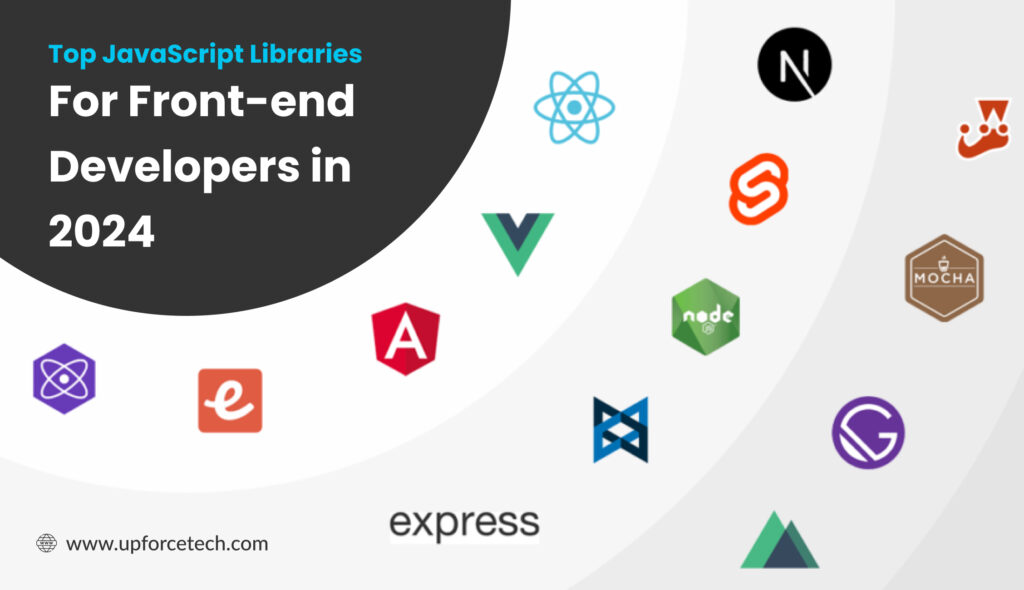Top JavaScript Libraries for Front-End Development in 2024

In the ever-evolving world of front-end development, JavaScript continues to play a pivotal role. As we move through 2024, developers are presented with a rich landscape of JavaScript libraries and frameworks designed to enhance user experiences and streamline development processes. This blog explores the top JavaScript libraries for front-end development in 2024, comparing libraries and frameworks, and providing insights on choosing the best tools for your projects.
Understanding JavaScript Libraries and Frameworks
Before diving into specific libraries, it’s crucial to understand the difference between JavaScript libraries and frameworks. While they are often used interchangeably, they serve different purposes:
JavaScript Libraries vs. Frameworks
-
JavaScript Library: A collection of pre-written JavaScript code that developers use to perform common tasks more efficiently. Libraries provide specific functionalities that you can integrate into your project. Examples include React and Lodash.
-
JavaScript Framework: A comprehensive platform that provides a structure for building applications. Frameworks include predefined rules and conventions that guide the development process. Examples include Angular and Vue.js.
JavaScript Libraries for Front-End Development in 2024
In 2024, several JavaScript libraries stand out for their performance, versatility, and ease of use. Here’s a look at some of the best JavaScript libraries you should consider for your front-end development projects.
1. React
Overview:
React remains one of the most popular JavaScript libraries for building user interfaces. Developed and maintained by Facebook, React excels in creating dynamic and responsive user interfaces through its component-based architecture.
Key Features:
- Component-Based Architecture: React allows developers to build reusable UI components, making code more modular and maintainable.
- Virtual DOM: React’s virtual DOM optimizes rendering performance by updating only parts of the UI that have changed.
- Strong Community Support: With a vast community and numerous third-party libraries, React offers a wealth of resources and tools.
Best For: Building complex, interactive UIs and single-page applications (SPAs).
GitHub Repository: React GitHub
2. Vue.js
Overview:
Vue.js is a progressive JavaScript framework known for its simplicity and ease of integration. It is designed to be incrementally adoptable, meaning you can use as much or as little of it as needed.
Key Features:
- Reactive Data Binding: Vue’s reactive data binding ensures that changes to the data model are automatically reflected in the UI.
- Component-Based Architecture: Like React, Vue promotes a component-based approach to building UIs.
- Easy Integration: Vue can be easily integrated into projects using other libraries or existing codebases.
Best For: Developers seeking a flexible, easy-to-learn library for building dynamic UIs and SPAs.
GitHub Repository: Vue.js GitHub
3. Angular
Overview:
Angular is a robust JavaScript framework developed by Google, offering a comprehensive suite of tools for building large-scale applications. Angular is a full-featured framework that provides everything you need to develop a complex application out-of-the-box.
Key Features:
- Two-Way Data Binding: Angular’s two-way data binding ensures that changes in the model are reflected in the view and vice versa.
- Dependency Injection: Angular’s dependency injection system promotes modularity and makes testing easier.
- Rich Ecosystem: Angular includes a set of tools and libraries, such as Angular CLI and Angular Material, to streamline development.
Best For: Large-scale applications requiring a full-featured framework with built-in functionalities.
GitHub Repository: Angular GitHub
4. Svelte
Overview:
Svelte is an innovative JavaScript library that shifts much of the work from the browser to the build step. Instead of using a virtual DOM, Svelte compiles components into highly efficient imperative code.
Key Features:
- Compile-Time Optimizations: Svelte compiles components into efficient JavaScript code, resulting in faster runtime performance.
- No Virtual DOM: By eliminating the virtual DOM, Svelte reduces the overhead associated with diffing and patching.
- Simple Syntax: Svelte offers a clean and concise syntax, making it easier for developers to write and maintain code.
Best For: Developers looking for a modern, high-performance library with a focus on compile-time optimizations.
GitHub Repository: Svelte GitHub
5. D3.js
Overview:
D3.js is a powerful library for creating data-driven documents. It enables developers to create complex and interactive data visualizations using HTML, SVG, and CSS.
Key Features:
- Data Binding: D3.js allows developers to bind data to DOM elements and apply data-driven transformations.
- Customizable Visualizations: D3 provides fine-grained control over the visual representation of data, allowing for highly customized visualizations.
- Integration with Other Libraries: D3 can be used in conjunction with other libraries, such as React or Vue, to create interactive data visualizations.
Best For: Creating complex and interactive data visualizations for data-heavy applications.
GitHub Repository: D3.js GitHub
6. Lodash
Overview:
Lodash is a utility library that provides a wide range of functions to simplify common programming tasks. It enhances JavaScript with additional methods for manipulating arrays, objects, and other data types.
Key Features:
- Utility Functions: Lodash offers utility functions for tasks such as deep cloning, debouncing, and merging objects.
- Performance Optimizations: Lodash is designed to be performant, with optimizations for common operations.
- Modular Design: Lodash can be imported in modular form, allowing developers to include only the functions they need.
Best For: Enhancing JavaScript with utility functions to simplify common tasks and improve code efficiency.
GitHub Repository: Lodash GitHub
7. Three.js
Overview:
Three.js is a JavaScript library that simplifies the creation of 3D graphics for the web. It provides a high-level API for rendering 3D scenes using WebGL.
Key Features:
- 3D Rendering: Three.js offers a range of features for creating and rendering 3D scenes, including support for lights, cameras, and materials.
- Integration with WebGL: Three.js abstracts the complexities of WebGL, making it easier to work with 3D graphics.
- Extensive Examples and Documentation: Three.js includes extensive documentation and a large number of examples to help developers get started.
Best For: Building interactive 3D graphics and visualizations for the web.
GitHub Repository: Three.js GitHub
8. Alpine.js
Overview:
Alpine.js is a minimal framework designed for adding interactivity to HTML. It provides a simple syntax for handling common front-end interactions without the need for a heavy framework.
Key Features:
- Declarative Syntax: Alpine.js uses a declarative syntax similar to Vue.js, making it easy to add interactivity to HTML.
- Lightweight: Alpine.js is lightweight and easy to integrate into existing projects.
- No Build Step Required: Alpine.js can be used directly in HTML, eliminating the need for a build step.
Best For: Adding interactivity to static HTML pages without the overhead of a full-featured framework.
GitHub Repository: Alpine.js GitHub
Choosing the Right JavaScript Library
When selecting a JavaScript library for your front-end development projects, consider the following factors:
- Project Requirements: Evaluate the specific needs of your project, such as the need for complex UI components, data visualizations, or interactive features.
- Performance: Consider the performance implications of the library, including its impact on load times and runtime efficiency.
- Community and Support: Look for libraries with strong community support and active development to ensure ongoing updates and improvements.
- Learning Curve: Assess the learning curve associated with the library and how it fits with your team’s skill set and experience.
Comparison Table
| Library | Key Features | Best For | GitHub Repository |
|---|---|---|---|
| React | Component-based, Virtual DOM, Strong community | Complex UIs, SPAs | React GitHub |
| Vue.js | Reactive data binding, Easy integration | Dynamic UIs, Flexible projects | Vue.js GitHub |
| Angular | Two-way data binding, Dependency injection | Large-scale applications | Angular GitHub |
| Svelte | Compile-time optimizations, No virtual DOM | High-performance apps | Svelte GitHub |
| D3.js | Data binding, Customizable visualizations | Data-heavy applications | D3.js GitHub |
| Lodash | Utility functions, Performance optimizations | Simplifying common tasks | Lodash GitHub |
| Three.js | 3D rendering, Integration with WebGL | Interactive 3D graphics | Three.js GitHub |
| Alpine.js | Declarative syntax, Lightweight | Adding interactivity to HTML | Alpine.js GitHub |
Conclusion
Choosing the right JavaScript library for your front-end development needs in 2024 can significantly impact the efficiency and quality of your projects. Whether you need a robust library for building complex UIs, a utility library for simplifying tasks, or a tool for creating interactive data visualizations, the options listed above provide powerful solutions to meet your needs.
How UpforceTech Can Help
At UpforceTech, we specialize in leveraging the latest JavaScript libraries and frameworks to build innovative and high-performance web applications. Our team of experienced developers is well-versed in integrating these tools into projects to deliver exceptional results.
For more information on how we can assist with your front-end development needs, visit UpforceTech.
Ready to grow your web development with the best JavaScript libraries? Contact Upforce Tech to see how our expertise can help bring your project to life.
Sign up for the free Newsletter
Choosing the right JavaScript library can make all the difference in creating an efficient, dynamic, and engaging user experience.
UpforceTech
FAQs
Some of the top JavaScript libraries for front-end development in 2024 include React, Vue.js, Angular, Svelte, and D3.js.
JavaScript libraries provide specific functionalities to be used within your project, while frameworks offer a more comprehensive structure and set of conventions for building applications.
JavaScript libraries can simplify development tasks, enhance performance, and provide powerful tools for creating dynamic and interactive user interfaces.
You can find examples and documentation for JavaScript libraries on their respective GitHub repositories and official websites.
UpforceTech offers expertise in integrating the latest JavaScript libraries into your projects to enhance functionality and performance. Visit UpforceTech to learn more.

